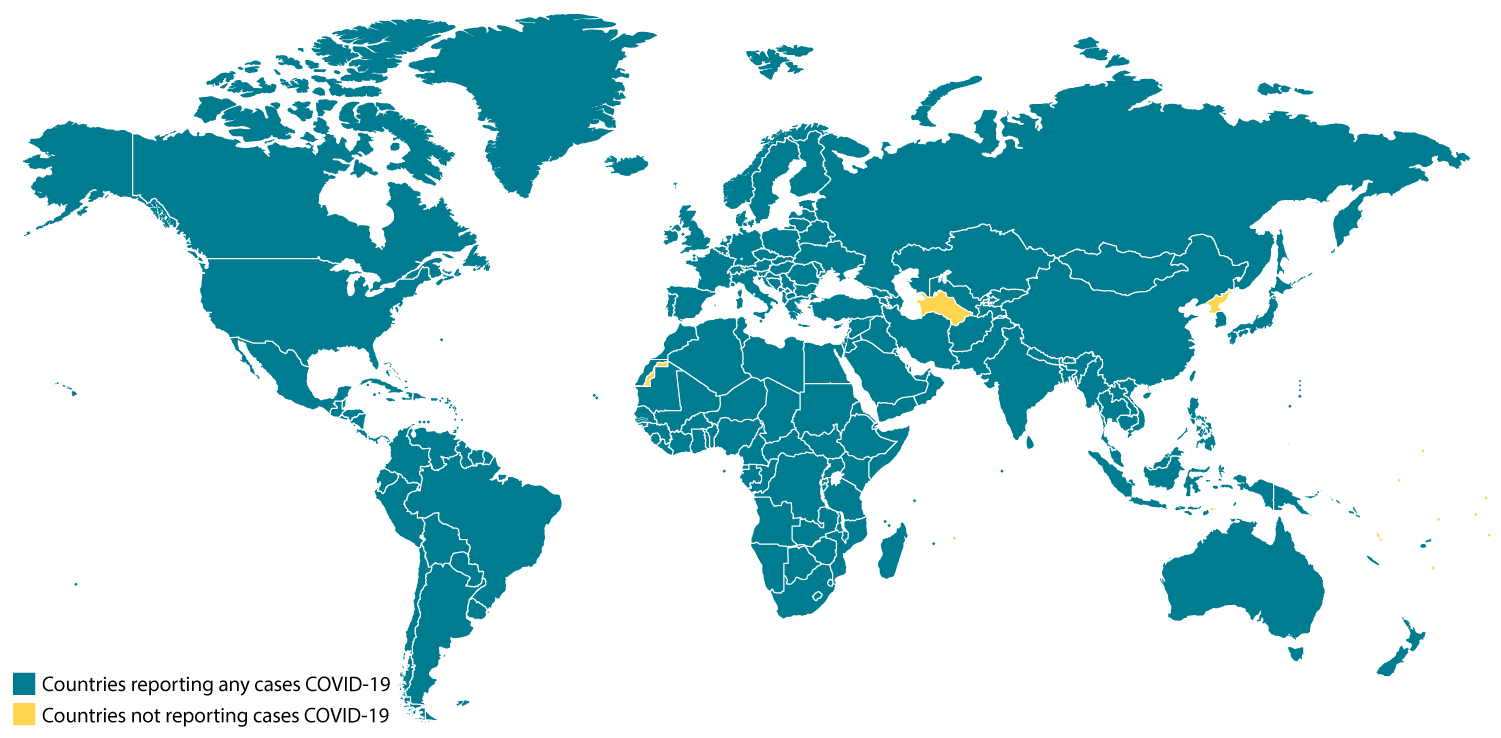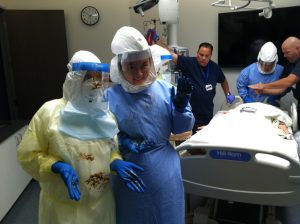1,099 patients with laboratory-confirmed 2019-nCoV ARD from 552 hospitals in 31 provinces/provincial municipalities in China
February 10th, 2020Abstract
Background: Since December 2019, acute respiratory disease (ARD) due to 2019 novel coronavirus (2019-nCoV) emerged in Wuhan city and rapidly spread throughout China. We sought to delineate the clinical characteristics of these cases.
Methods: We extracted the data on 1,099 patients with laboratory-confirmed 2019-nCoV ARD from 552 hospitals in 31 provinces/provincial municipalities through January 29th, 2020.
Results: The median age was 47.0 years, and 41.90% were females. Only 1.18% of patients had a direct contact with wildlife, whereas 31.30% had been to Wuhan and 71.80% had contacted with people from Wuhan. Fever (87.9%) and cough (67.7%) were the most common symptoms. Diarrhea is uncommon. The median incubation period was 3.0 days (range, 0 to 24.0 days). On admission, ground-glass opacity was the typical radiological finding on chest computed tomography (50.00%). Significantly more severe cases were diagnosed by symptoms plus reverse-transcriptase polymerase-chain-reaction without abnormal radiological findings than non-severe cases (23.87% vs. 5.20%, P<0.001). Lymphopenia was observed in 82.1% of patients. 55 patients (5.00%) were admitted to intensive care unit and 15 (1.36%) succumbed. Severe pneumonia was independently associated with either the admission to intensive care unit, mechanical ventilation, or death in multivariate competing-risk model (sub-distribution hazards ratio, 9.80; 95% confidence interval, 4.06 to 23.67).
Conclusions: The 2019-nCoV epidemic spreads rapidly by human-to-human transmission. Normal radiologic findings are present among some patients with 2019-nCoV infection. The disease severity (including oxygen saturation, respiratory rate, blood leukocyte/lymphocyte count and chest X-ray/CT manifestations) predict poor clinical outcomes.
China’s finance ministry said on Sunday all levels of government had allocated a total of 71.85 billion yuan ($10.26 billion) as of Saturday afternoon to fight coronavirus.
February 10th, 20202019-nCoV: from the Johns Hopkins Center for Health Security.
February 10th, 2020Plane skids off runway in Turkey: Dead and injured
February 5th, 2020At least 33 people have been killed by two avalanches near Turkey’s eastern city of Van.
February 5th, 2020HONG KONG TIGHTENS BORDER IN RESPONSE TO STRIKES
February 3rd, 2020Hong Kong will reportedly close four additional border checkpoints as the government has received increasing pressure from the public, including healthcare providers, to tighten border controls with mainland China. In response to counter the demands to close the border entirely, Chief Executive Carrie Lam Cheng Yuet-ngor cited the World Health Organization’s International Health Regulations (2005) which outlines legal provisions on whether travel and borders can be restricted in the event of a health emergency.

The WHO situation report
February 3rd, 2020https://www.who.int/docs/default-source/coronaviruse/situation-reports/20200202-sitrep-13-ncov-v3.pdf?sfvrsn=195f4010_6
SITUATION IN NUMBERS total and new cases in last 24 hours
Globally 14557 confirmed (2604 new)
China 14411 confirmed (2590 new) 2110 severe (315 new) 304 deaths (45 new)
Outside of China 146 confirmed (14 new) 23 countries 1 death
Public Health Emergency Law Online Training
January 30th, 2020Management of public health emergencies requires effective use of legal authorities. In these incidents, public health and emergency management responses must be coordinated under a complex set of federal, state, tribal, and local laws. CDC’s Public Health Emergency Law course prepares state, tribal, local, and territorial practitioners to make informed legal decisions related to emergency preparedness and response activities in their jurisdictions.
PHEL consists of three competency-based units and covers legal issues to consider before, during, and after public health emergencies. Each interactive unit takes about 40 minutes to complete.
Public Health Emergency Law Online Trainingexternal icon
- Unit 1—Introduction to Emergency Management Systems Preparedness and Response
Covers the legal underpinnings of emergency management systems - Unit 2—Emergency Powers: Protection of Persons, Volunteers, and Responders
Describes legal considerations for personnel responding to emergencies - Unit 3—Emergency Powers: Management and Protection of Property and Supplies
Examines considerations surrounding materials and property during public health emergencies
Disclaimer: These course materials are for instructional use only and are not intended as a substitute for professional legal or other advice. While every effort has been made to verify the accuracy of these materials, the legal authorities and requirements may vary from jurisdiction to jurisdiction. Always seek the advice of an attorney or other qualified professional with any questions you may have regarding a legal matter. The contents of these presentations have not been formally disseminated by the Centers for Disease Control and Prevention and should not be construed to represent any agency determination or policy.









